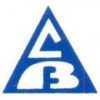Filter interviews by
Kuwait National Petroleum Company Mechanical Technician Interview Questions, Process, and Tips
Kuwait National Petroleum Company Mechanical Technician Interview Experiences
1 interview found

(11 Questions)
- Q1. What is centrifugal pump?
- Ans.
A centrifugal pump is a mechanical device used to transport fluids by converting rotational kinetic energy into hydrodynamic energy.
Centrifugal pumps are commonly used in various industries, including oil and gas, water treatment, and HVAC systems.
They work by using an impeller to rotate and create a centrifugal force, which pushes the fluid towards the pump outlet.
The fluid enters the pump through the suction inlet an...
- Q2. How many types of valve? What are they?
- Ans.
There are several types of valves used in mechanical systems.
Gate valve: used to control the flow of fluid by lifting or lowering a gate
Ball valve: uses a ball to control the flow of fluid
Butterfly valve: uses a disc to control the flow of fluid
Check valve: allows fluid to flow in one direction only
Globe valve: controls flow by raising or lowering a plug
Needle valve: uses a long, tapered needle to control flow
Diaphragm...
- Q3. Write about ball valve?
- Ans.
A ball valve is a type of valve that uses a ball-shaped disc to control the flow of fluid through a pipe.
Ball valves are commonly used in industrial applications for their durability and reliability.
They have a simple design, consisting of a ball with a hole in the middle that can be rotated to control the flow of fluid.
Ball valves can be either full port or reduced port, depending on the size of the ball and the hole.
...
- Q4. What is shell and tube heat exchanger?
- Ans.
A shell and tube heat exchanger is a device used to transfer heat between two fluids.
Consists of a shell (outer vessel) and tubes (inner vessels)
One fluid flows through the tubes while the other flows around the tubes in the shell
Heat is transferred from one fluid to the other through the tube walls
Commonly used in industries such as power generation, chemical processing, and HVAC
Example: Cooling water in a power plant
- Q5. How many types of heat exchanger? What are they?
- Ans.
There are several types of heat exchangers, including shell and tube, plate and frame, and finned tube.
Shell and tube heat exchangers are the most common type and consist of a shell with tubes inside.
Plate and frame heat exchangers use thin plates to transfer heat between fluids.
Finned tube heat exchangers have tubes with fins attached to increase surface area for heat transfer.
Other types include spiral, double pipe, ...
- Q6. What is that full form of PPE?
- Ans.
PPE stands for Personal Protective Equipment.
PPE is equipment worn to minimize exposure to hazards that may cause serious workplace injuries or illnesses.
Examples of PPE include safety glasses, gloves, hard hats, respirators, and safety shoes.
PPE should be selected based on the specific hazards present in the workplace.
Employers are responsible for providing PPE to their employees and ensuring that it is properly maint...
- Q7. What is axial flow pump?
- Ans.
An axial flow pump is a type of pump that uses an impeller to create fluid flow parallel to the pump shaft.
Axial flow pumps are commonly used in applications where large volumes of fluid need to be moved at low to medium pressures.
They are often used in irrigation systems, drainage systems, and cooling systems.
The impeller of an axial flow pump has blades that resemble a propeller, which helps in generating the axial f...
- Q8. Write about check valve?
- Ans.
A check valve is a mechanical device that allows fluid to flow in one direction only.
Check valves are commonly used in plumbing systems to prevent backflow of water.
They are also used in hydraulic systems to prevent reverse flow of fluid.
Check valves can be classified into different types such as swing check valves, lift check valves, and ball check valves.
These valves work by using a disc or a ball that opens and clos...
- Q9. Shortly explain about positive displacement pump?
- Ans.
Positive displacement pump is a type of pump that moves fluid by trapping a fixed amount of it and then forcing it into the discharge pipe.
Positive displacement pumps operate by trapping a specific volume of fluid and then forcing it into the discharge pipe.
These pumps are capable of generating high pressures and are used in various industries such as oil and gas, chemical, and food processing.
Examples of positive disp...
- Q10. What is globe valve?
- Ans.
A globe valve is a type of valve used to regulate or stop the flow of fluid in a pipeline.
It has a spherical body with an internal baffle that directs the flow of fluid.
The valve can be opened or closed by rotating the stem.
It provides a tight seal when closed, preventing leakage.
Globe valves are commonly used in applications where throttling or regulating flow is required.
They are often found in water systems, steam s
- Q11. What is PPE ? Give it explain?
- Ans.
PPE stands for Personal Protective Equipment. It refers to protective clothing, helmets, goggles, or other equipment designed to protect the wearer's body from injury or infection.
PPE is used in various industries to protect workers from hazards.
Examples of PPE include safety glasses, gloves, hard hats, respirators, and earplugs.
PPE should be selected based on the specific hazards present in the workplace.
Proper traini...
Interview Preparation Tips
Top trending discussions






Interview questions from similar companies


(5 Questions)
- Q1. What are types of positive pump
- Ans.
Positive pumps are used to move fluids by creating a pressure difference.
Positive displacement pumps
Centrifugal pumps
Diaphragm pumps
Gear pumps
Piston pumps
Peristaltic pumps
Rotary pumps
Screw pumps
Vane pumps
- Q2. What is centrifugal pump
- Ans.
A centrifugal pump is a mechanical device that uses centrifugal force to transport fluids.
Centrifugal pumps are commonly used in various industries for fluid transportation.
They work by converting rotational energy from a motor into kinetic energy in the fluid.
The fluid enters the pump through the inlet and is accelerated by the impeller.
The impeller's rotation creates centrifugal force, pushing the fluid towards the p...
- Q3. Where is jockey pump located
- Ans.
The jockey pump is typically located in the fire pump room or near the main fire pump.
The jockey pump is a small pump used to maintain pressure in a fire protection system.
It is usually installed in conjunction with the main fire pump.
The jockey pump helps prevent the fire pump from starting and stopping frequently by maintaining a constant pressure in the system.
It is commonly found in the fire pump room or in close p...
- Q4. Where is fire engines used
- Ans.
Fire engines are used in various locations to respond to and extinguish fires.
Fire engines are used in cities and towns to respond to structural fires in buildings.
They are also used in rural areas to combat wildfires.
Fire engines are deployed at airports to handle aircraft fires and emergencies.
They are used in industrial areas to respond to fires in factories and warehouses.
Fire engines are even used on ships and boa
- Q5. What is motor operator valve
- Ans.
A motor operator valve is a type of valve that is operated by an electric motor.
Motor operator valves are commonly used in industrial applications.
They are designed to control the flow of fluids or gases.
Motor operator valves can be used in various systems, such as pipelines, power plants, and manufacturing processes.
These valves are typically controlled remotely, allowing for automated operation.
Examples of motor oper...
Interview Preparation Tips
Know yourself and what you want
Apply even if you'r not qualified

Mechanical Technician Interview Questions & Answers
Reliance Industriesposted on 5 Apr 2024
(2 Questions)
- Q1. Type of pumps and pump sealing system and pump api plan
- Ans.
Different types of pumps include centrifugal, reciprocating, and rotary pumps. Pump sealing systems can include mechanical seals, packing seals, and magnetic drive seals. Pump API plans are standardized plans for pump maintenance and troubleshooting.
Types of pumps: centrifugal, reciprocating, rotary
Pump sealing systems: mechanical seals, packing seals, magnetic drive seals
Pump API plans: standardized plans for maintena
- Q2. Compressors mechanical maintenance

I appeared for an interview before Nov 2023.
(2 Questions)
- Q1. Tell me about yourself?
- Q2. One of the biggest Achivement?
- Ans.
One of my biggest achievements was successfully leading a team to complete a complex project ahead of schedule and under budget.
Led a team to complete a complex project ahead of schedule
Managed resources effectively to stay under budget
Received recognition for successful project completion
(3 Questions)
- Q1. Tell me about refrigeration cycle
- Ans.
Refrigeration cycle is a process in which a refrigerant absorbs heat from a low-temperature space and rejects it in a high-temperature space.
The refrigeration cycle consists of four main components: compressor, condenser, expansion valve, and evaporator.
The refrigerant starts as a low-pressure gas in the evaporator where it absorbs heat from the space being cooled.
The compressor then compresses the refrigerant into a h...
- Q2. How work of four stroke cycle engine?
- Ans.
Four stroke cycle engine works by completing four distinct processes - intake, compression, power, and exhaust strokes.
Intake stroke: Air-fuel mixture is drawn into the cylinder as the piston moves downward.
Compression stroke: The intake valve closes and the piston compresses the mixture, preparing it for ignition.
Power stroke: The spark plug ignites the compressed mixture, causing an explosion that drives the piston d...
- Q3. How you handle when you set back?
Interview Preparation Tips

Mechanical Technician Interview Questions & Answers
Sterling Oil Exploration & Energy Productionposted on 5 Jan 2023
I appeared for an interview in Dec 2022.

(2 Questions)
- Q1. Engine relented question and preventive maintenance
- Q2. Technical issue gear box
Interview Preparation Tips

Interview Preparation Tips
Experience: "tell me about yourself..i gave him info on me my family n in my hobbies i mentioned 'sports for fun' n he caught me der..
what would u play in commonwealth games?
who won max no of gold medals in the recent olympics..
(my answer was a simple ""no idea!!!""
tell me about ur industrial visits..which 1 did u like betr n give me some information on the part u liked the most..(then some details on motors etc)
what is a bearing?where do u see a bearing bein used in this room?? (fan)
why reliance?? why not siemens or abb??"
Skill Tips: "Just be confident even if u r unable to answer a few questions..they dont expect u to be perfect..they just want to see how much u kno n how much u can learn..n almost every company asks if u r comfortable to be placed anywhere in india..just say yes..they do that to test ur flexibility..n if u r really in need of a job, be prepared to go to any place..
If u r the first to be interviewed, u have higher chances of getting selected..an empirical observation.."
College Name: Veermata Jijabai Technological Institute, Mumbai [ VJTI ]

Instrumentation Technician Interview Questions & Answers
Oil And Natural Gas Corporationposted on 1 Apr 2025
I appeared for an interview before Apr 2024, where I was asked the following questions.
- Q1. What is instrument
- Ans.
An instrument is a device used to measure, control, or manipulate physical quantities in various fields.
Instruments can measure temperature, pressure, flow, and level.
Examples include thermometers, manometers, flow meters, and level sensors.
They are essential in industries like manufacturing, healthcare, and environmental monitoring.
Instruments can be analog or digital, with varying degrees of precision and functionali
- Q2. What ispressure
- Ans.
Pressure is the force applied per unit area on a surface, influencing fluid dynamics and mechanical systems.
Pressure is measured in units such as Pascals (Pa), atmospheres (atm), or pounds per square inch (psi).
In fluids, pressure increases with depth due to the weight of the fluid above.
Example: Atmospheric pressure at sea level is approximately 101.3 kPa.
In medical terms, blood pressure is a critical measure of cardi

I applied via Referral and was interviewed before Apr 2022. There were 3 interview rounds.

(2 Questions)
- Q1. Why would you like to work with shell?
- Q2. Have you worked in any oil and gas facility before now?
What I know about permit to work system

Mechanical Engineer Interview Questions & Answers
Reliance Industriesposted on 7 Dec 2022
I applied via Recruitment Consulltant and was interviewed before Dec 2021. There were 3 interview rounds.

(3 Questions)
- Q1. What are your achievement
- Q2. What are the different types of pump and sealing system you known
- Ans.
Different types of pumps include centrifugal, positive displacement, and axial flow. Sealing systems include mechanical, gland, and magnetic.
Centrifugal pumps use a rotating impeller to create a flow of fluid. Examples include end-suction, inline, and multistage pumps.
Positive displacement pumps move fluid by trapping a fixed amount and forcing it through the discharge. Examples include piston, diaphragm, and gear pump...
- Q3. What are the maintenance philosophy you known about
- Ans.
Maintenance philosophies include preventive, predictive, corrective, and reliability-centered maintenance.
Preventive maintenance involves regularly scheduled inspections and maintenance to prevent equipment failure.
Predictive maintenance uses data analysis and monitoring to predict when maintenance is needed.
Corrective maintenance is performed after a failure has occurred to restore equipment to working condition.
Relia...
(2 Questions)
- Q1. Why you want to leave the current organization
- Q2. What is your salary expectations
Interview Preparation Tips

Mechanical Engineer Interview Questions & Answers
Reliance Industriesposted on 24 May 2023
I applied via Company Website and was interviewed before May 2022. There were 2 interview rounds.

(4 Questions)
- Q1. How can you managed manpower and helpful mechanical sources distribute
- Ans.
Manpower can be managed by proper planning, delegation of tasks, and effective communication.
Create a detailed project plan with timelines and milestones
Delegate tasks based on individual strengths and expertise
Ensure effective communication channels are established
Regularly monitor progress and make necessary adjustments
Utilize helpful mechanical sources such as automation and technology
Provide necessary training and ...
- Q2. Column Maintenance mainly useful source
- Q3. ASME Codes and standard
- Ans.
ASME Codes and standards are a set of guidelines and regulations for designing, manufacturing, and testing mechanical equipment.
ASME codes and standards are developed and maintained by the American Society of Mechanical Engineers.
They cover a wide range of topics such as pressure vessels, piping, boilers, and nuclear power plants.
Compliance with ASME codes and standards is often required by law or industry regulations.
...
- Q4. Material requirements
Kuwait National Petroleum Company Interview FAQs
Tell us how to improve this page.
Kuwait National Petroleum Company Interviews By Designations
- Kuwait National Petroleum Company Waiter Interview Questions
- Kuwait National Petroleum Company NDT Technician Interview Questions
- Kuwait National Petroleum Company Field Operator Interview Questions
- Kuwait National Petroleum Company Senior Electrical Technician Interview Questions
- Kuwait National Petroleum Company Electrical Maintenance Technician Interview Questions
- Kuwait National Petroleum Company Panel Operator Interview Questions
- Kuwait National Petroleum Company Service Engineer Interview Questions
- Kuwait National Petroleum Company Instrumentation Supervisor Interview Questions
- Show more
Interview Questions for Popular Designations
- Mechanical Engineer Interview Questions
- Diploma Mechanical Engineer Interview Questions
- Mechanical Maintenance Engineer Interview Questions
- Senior Engineer Mechanical Interview Questions
- Mechanical Fitter Interview Questions
- Mechanical Maintenance Fitter Interview Questions
- Mechanical Supervisor Interview Questions
- Mechanical Foreman Interview Questions
- Show more
Kuwait National Petroleum Company Mechanical Technician Interview Process
based on 2 interviews
Interview experience
Interview Questions from Similar Companies

Kuwait National Petroleum Company Mechanical Technician Reviews and Ratings
based on 9 reviews
Rating in categories
|
Field Operator
82
salaries
| ₹18 L/yr - ₹36 L/yr |
|
DCS Operator
32
salaries
| ₹24 L/yr - ₹42 L/yr |
|
Operations Engineer
32
salaries
| ₹15.7 L/yr - ₹65 L/yr |
|
Instrumentation Technician
23
salaries
| ₹3.8 L/yr - ₹13 L/yr |
|
Instrument Engineer
22
salaries
| ₹9 L/yr - ₹28.4 L/yr |

Reliance Industries

Shell

Oil And Natural Gas Corporation

Linde India
- Home >
- Interviews >
- Kuwait National Petroleum Company Interview Questions >
- Kuwait National Petroleum Company Mechanical Technician Interview Questions











